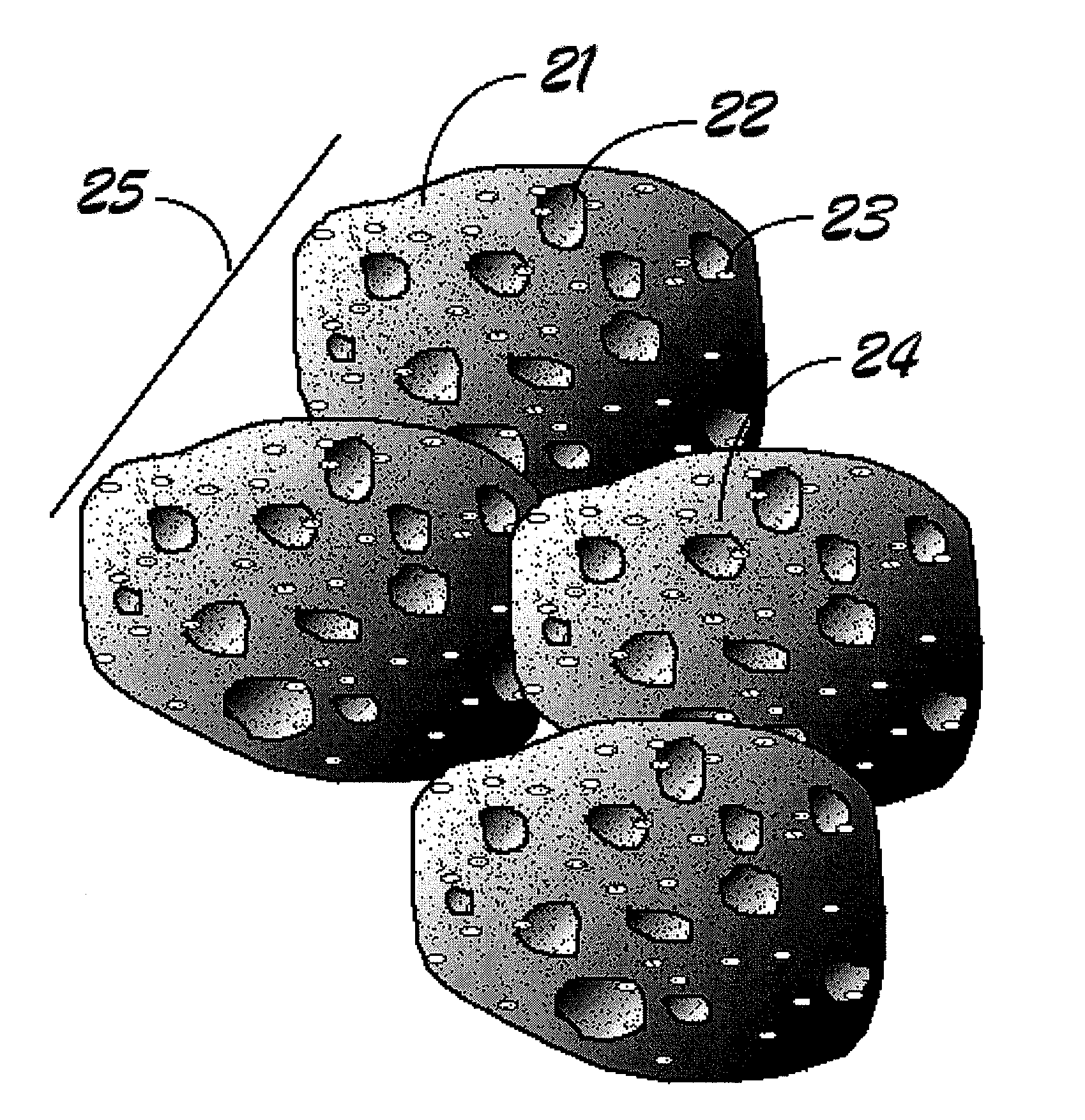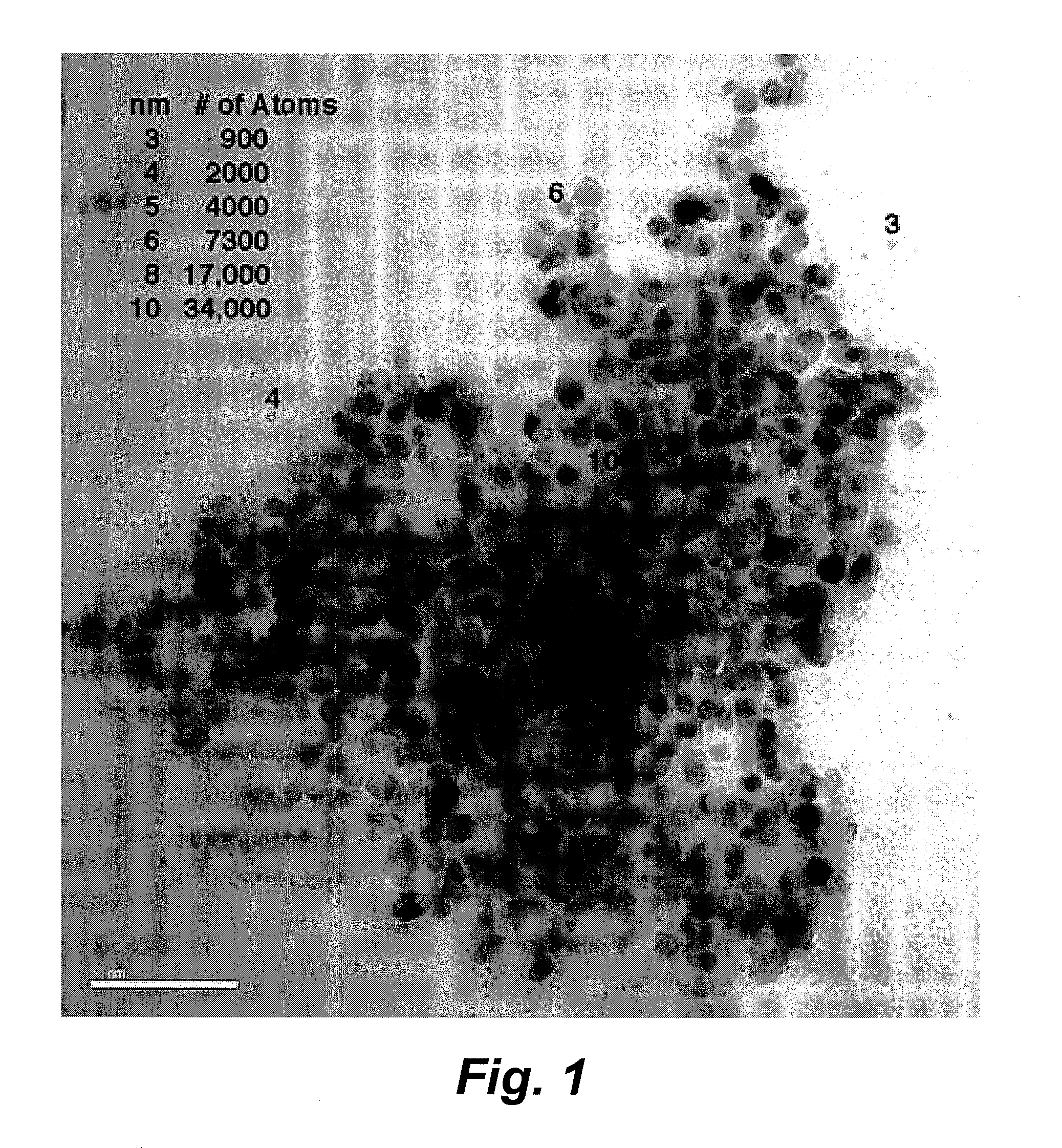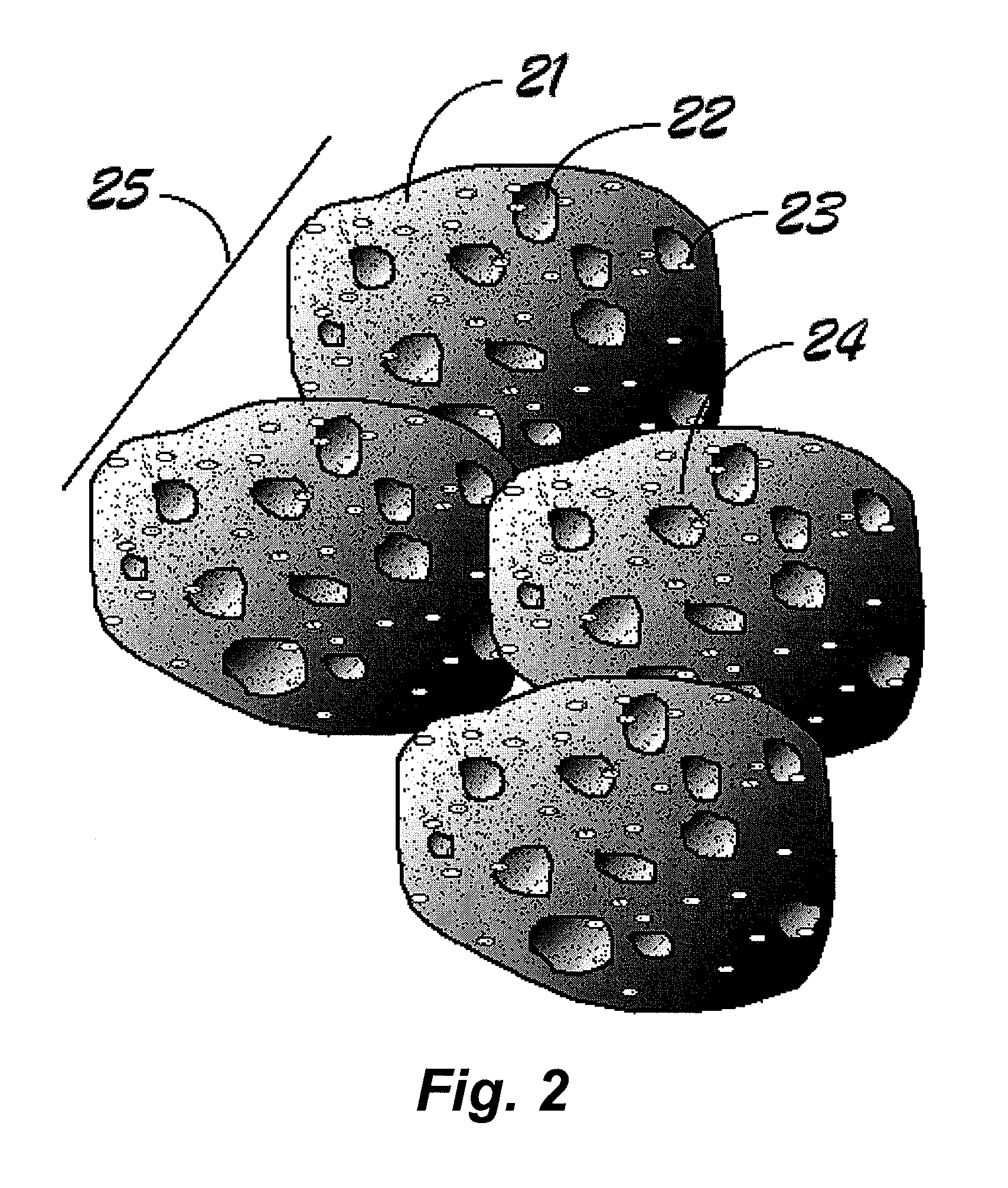Electrochemical catalysts
a technology of electrochemical catalysts and catalysts, which is applied in the direction of physical/chemical process catalysts, metal/metal-oxide/metal-hydroxide catalysts, cell components, etc., can solve the problems of limited supply, high cost of platinum, and obstacle to the widespread commercial acceptance of such devices, and achieve the effect of low cos
- Summary
- Abstract
- Description
- Claims
- Application Information
AI Technical Summary
Benefits of technology
Problems solved by technology
Method used
Image
Examples
example 1
Preparation of a Cathode Mixture
[0087]About 400 g to 1500 g distilled water was placed into a large beaker with a volume of about 3 times the water volume. About ⅓ the water weight of activated carbon Darco® G-60 (American Norit Corp.) or equivalent was added to the water. About ⅓ the weight of carbon of potassium permanganate (KMnO4) was added to the mixture slowly while stirring. The amount of KMnO4 can range from none to equal to weight of the carbon, resulting in from about 0% to about 15% by weight as manganese (Mn) in the final cathode. The KMnO4 may be added as dry crystals or as a prepared solution of about 20% KMnO4 in water. The above components were mixed for at least 20 minutes to allow the KMnO4 to be reduced to Mn(+2) in situ by the activated carbon. Water was added if the mixture was too viscous until it was easily stirred. From about 0.07 g to about 0.44 g of PTFE suspension (Teflon® 30b, DuPont) per gram of carbon was added while stirring the mixture, resulting in a...
example 2
Preparation of Electrode Active Layer
[0090]The following preparation method was used to prepare an exemplary composition of the electrode active layer 42. (See Table 1, below, Number 9, for example.) The quantities are representative only and the quantities and proportions can be varied.
[0091]Distilled water (500 g) was placed into a large (at least about 1.5 liters) beaker. Activated carbon powder (150 g Darco® G-60, American Norit) or equivalent was slowly added to the distilled water, mixing slowly to dampen mixture. Using a propeller type mixer, a stable vortex was established without drawing air into the fluid (i.e., vortex not touching the mixing blade) and mixed for about 20 minutes. Slowly (over about 30 seconds), about 250 grams of a 20% KMnO4 solution was added to the mixture, and the mixture stirred for 30 minutes. Very slowly (over about 1 minute), 25 cc PTFE suspension (Teflon® 30b DuPont) was added. Stirring was continued for 30 minutes, while maintain a vortex without...
example 3
Methanol Preparation Method of Electrode Active Layer
[0093]The following methanol preparation method forms an exemplary, preferred composition of the electrode active layer 42. (See FIG. 7.) The quantities are representative only and the quantities and proportions may be varied.
[0094]About 500 g distilled water was placed into a large (at least about 1.5 liters) beaker. Activated carbon powder (150 grams, Darco® G-60, American Norit) or equivalent was slowly added to distilled water, mixing slowly to dampen mixture. Using a propeller type mixer, a stable vortex was established without drawing air into the fluid (i.e., the vortex not touching the mixing blade) and mixed for about 20 minutes. A PTFE suspension (25 cc) (Teflon® 30b, DuPont) was very slowly (over about 1 minute) added. Stirring was continued for about 30 minutes, while maintaining the vortex without allowing air to be driven into the fluid. The mixture initially became very viscous, then less so as the Teflon particles ...
PUM
| Property | Measurement | Unit |
|---|---|---|
| diameter | aaaaa | aaaaa |
| diameters | aaaaa | aaaaa |
| diameters | aaaaa | aaaaa |
Abstract
Description
Claims
Application Information
 Login to View More
Login to View More - R&D
- Intellectual Property
- Life Sciences
- Materials
- Tech Scout
- Unparalleled Data Quality
- Higher Quality Content
- 60% Fewer Hallucinations
Browse by: Latest US Patents, China's latest patents, Technical Efficacy Thesaurus, Application Domain, Technology Topic, Popular Technical Reports.
© 2025 PatSnap. All rights reserved.Legal|Privacy policy|Modern Slavery Act Transparency Statement|Sitemap|About US| Contact US: help@patsnap.com



